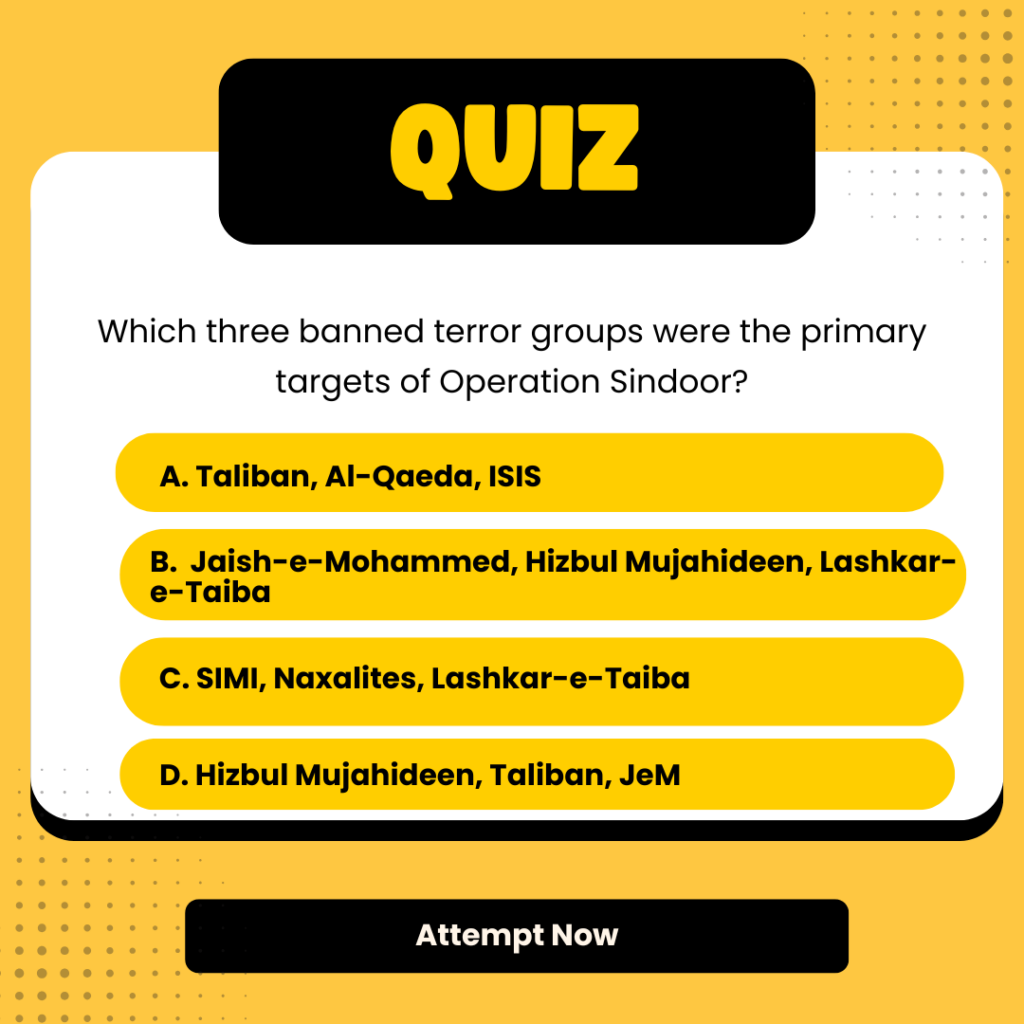In a bold and meticulously coordinated military maneuver, the Indian Armed Forces executed Operation Sindoor, a covert operation targeting nine major terror hideouts across Pakistan and Pakistan-occupied Kashmir (PoK). This operation came two weeks after the Pahalgam terror attack, which claimed the lives of 26 Indian civilians and security personnel, prompting a strategic and swift response from India’s defence establishment.
Genesis of Operation Sindoor
Aftermath of the Pahalgam Attack
The brutal terrorist attack in Pahalgam, attributed to cross-border infiltration and support from Pakistan-based terror outfits, triggered nationwide outrage. In response, the Indian government greenlit a tri-service military strike, involving the Army, Navy, and Air Force, under the code name “Operation Sindoor”.
Objective and Strategy
The primary goal was to dismantle terror infrastructure of three banned organisations operating with impunity in Pakistan and PoK:
- Jaish-e-Mohammed (JeM)
- Lashkar-e-Taiba (LeT)
- Hizbul Mujahideen (HM)
Indian defence officials emphasized that the operation was “focused, measured, and non-escalatory”, ensuring no engagement with Pakistani military installations to avoid full-scale conflict.
Execution of the Operation
Precision Night Raids
The strikes were carried out during the early hours of the night using precision weapons and advanced surveillance. Indian forces did not cross the international border physically; instead, the operation was executed remotely from Indian territory with high-precision long-range munitions, UAVs, and missile systems.
Tri-Forces Coordination
This was one of the rare occasions where all three branches of India’s military—Army, Navy, and Air Force—collaborated in a synchronized manner. The Air Force deployed surveillance drones and provided intelligence, while the Army’s special units engaged in targeting and munitions deployment. The Navy, though not directly involved in combat, played a crucial role in logistics and cyber surveillance.
Terror Sites Targeted Under Operation Sindoor
The operation struck nine key terror hideouts, out of which four were located in mainland Pakistan, while five were in Pakistan-occupied Kashmir (PoK). Each location was reportedly a training or logistical facility used to prepare terrorists for infiltration into Indian territory.
Targets in Pakistan:
- Markaz Subhan Allah, Bahawalpur – A well-known Jaish-e-Mohammed (JeM) headquarters where recruitment and indoctrination were carried out.
- Markaz Taiba, Muridke – The infamous Lashkar-e-Taiba (LeT) base and ideological center near Lahore.
- Sarjal, Tehra Kalan – Believed to be a hidden JeM training module in a rural area.
- Mehmoona Joya, Sialkot – Used by Hizbul Mujahideen (HM) for guerrilla warfare training and weapons supply.
Targets in Pakistan-occupied Kashmir (PoK):
- Markaz Ahle Hadith, Barnala – A strategic LeT facility, camouflaged as a religious seminary.
- Markaz Abbas, Kotli – Another Jaish-e-Mohammed camp, serving as a logistics and explosives storage hub.
- Maskar Raheel Shahid, Kotli – A known Hizbul Mujahideen base, facilitating cross-border operations.
- Shawai Nalla Camp, Muzaffarabad – A Lashkar camp used for advanced tactical training in mountainous terrain.
- Syedna Bilal Camp, Muzaffarabad – A high-security JeM camp, believed to host foreign trainers and radical clerics.








 Current Affairs 18th July, 2025
Current Affairs 18th July, 2025
 Top-5 Happiest Countries in the World by...
Top-5 Happiest Countries in the World by...
 Top-5 Cotton Exporting Countries in the ...
Top-5 Cotton Exporting Countries in the ...

